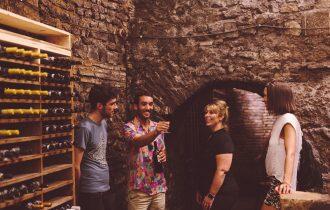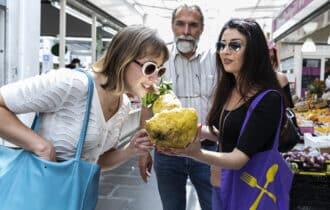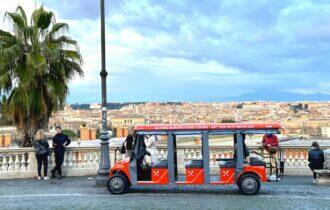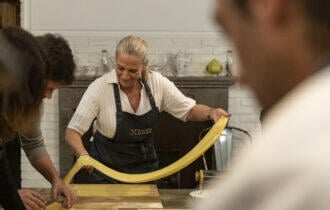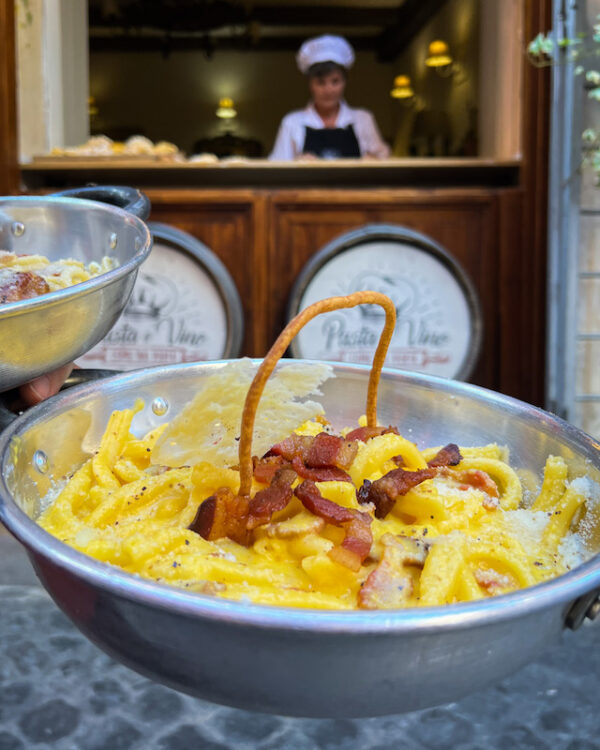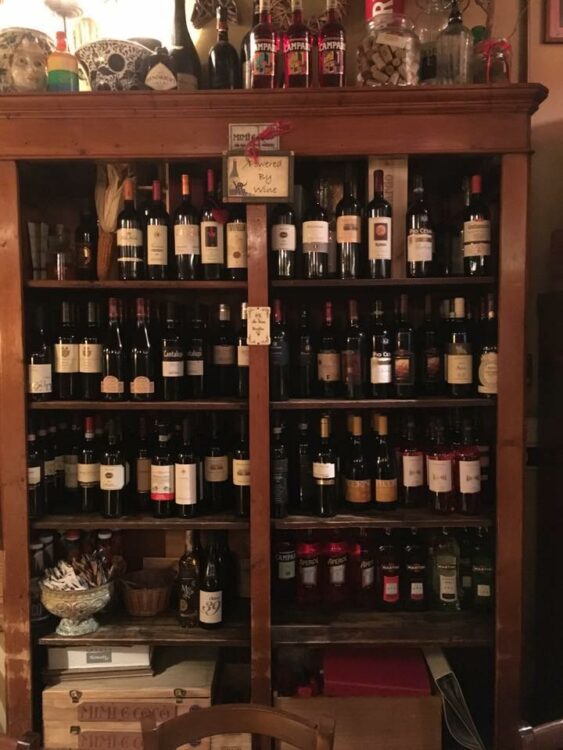Roman cuisine is often referred to as being “way too delicious to be easy to make.” Well, if you’ve always wanted to cook Roman food but never had the courage to try, you’re in luck! Roman cuisine carries a faraway echo of the diverse populations that made their way across its territory. It is diverse within itself, but one main similarity ties each Italian dish together. Roman food originates from the simple basics of “la cucina povera” (literally, the poor cuisine). The ingredients used in these traditional dishes were kept, hunted or grown by the very consumers of the meals, and no parts ever went to waste. Over the centuries Roman cuisine has been enriched with different flavors, but like all food in Italy, it has never lost its touch of “simplicity.”
One of the theories about pasta alla carbonara claims it was brought to Rome by the carbonari (mine workers of the Italian Apennines). The main ingredients of this pasta dish (eggs and cheese) were very easily conserved and transported and it is, in fact, thought that the dish could be prepared in advance and eaten cold by the workers. Others believe that Italians began eating the dish around the time when the American troops arrived in Italy during the Second World War, bringing with them eggs and bacon in powered form. Carbonara is the evolution of a dish once called ‘cacio e uova’ (cheese and eggs), more commonly known in the south of Italy.
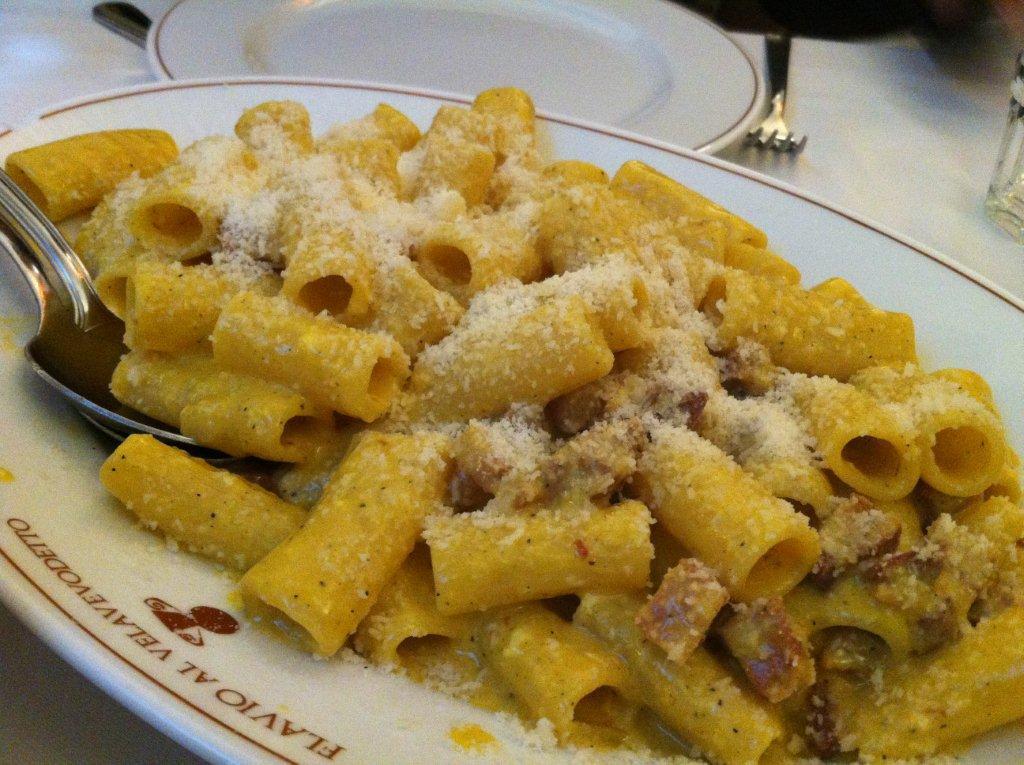
Another very similar traditional Roman dish, cacio e pepe (cheese and pepper), was born from the lack of eggs to make Carbonara. The key ingredient of both dishes is the powdered black pepper, which resembles coal dust from the mines. When I recommend it to visitors it always sounds so boring, “It’s a pasta with cheese and pepper!” – but on the contrary, it is so tasty and creamy. Definitely one of my all time favourites of the Roman food classics.
Rigatoni Carbonara
When it comes to making carbonara, we are confronted with the quintessential questions: pancetta or guanciale? Whole eggs or yolks? Spaghetti or rigatoni? Well, clearly there are a number of ways to make the fabulous Carbonara, but here’s how we make it!
Ingredients
- 400g (14 ounces) guanciale – Italian-style bacon made from pig’s jowl
- 500g (17 ounces) rigatoni pasta
- 4 eggs
- 200g (7 ounces) Pecorino Romano cheese
- Pinch of freshly ground black pepper
- 1 cup sparkling water
- a splash of white wine
Method
- Dice your guanciale and fry it in a pan with a splash of wine, until crispy. There’s no need to add extra olive oil as the guanciale releases a fair amount of fat as it cooks.
- Bring a pot of water to the boil, add a couple handfuls of salt, and cook your pasta al dente (usually a few minutes less than what the package says)
- In a separate bowl, mix the eggs, pepper and pecorino, and add the sparkling water to make the mixture light and airy.
- Add the guanciale to the egg mixture
- When the pasta is cooked, drain well and add to the egg and bacon mixture. Turn on the flame to medium heat.
- Mix the ingredients in the pan by rapidly moving the pan in circles above the flame with both hands on the handles. Pay close attention to the consistency of the egg on the outer edges of the pan as you rotate. When the eggs begin to streak along the edges, quickly remove the pan from the heat. Over cooking will result in scrambled eggs! The whole “mixing” process should last a max of 10 seconds.
- Serve pasta with an extra sprinkle of pecorino and freshly ground pepper.
Pasta Cacio e Pepe
Ingredients
- 500g tonnarelli or spaghetti
- 300g Pecorino Romano cheese
- ½ cup pasta water
- 1 Tbsp fresh pepper
- 3 Tbsp extra virgin olive oil
Method
- Bring a pot of salted water to the boil, and cook pasta al dente (just a few minutes less than what the package says).
- In a separate bowl, mix the grated pecorino cheese with a few spoonfuls of cooking water to make the mixture creamy (you want it to be liquid enough for the pasta to soak it up nicely without ending up dry).
- Add oil and freshly ground pepper.
- Drain the pasta and add to the mixture. Mix until fully incorporated and perfectly creamy.
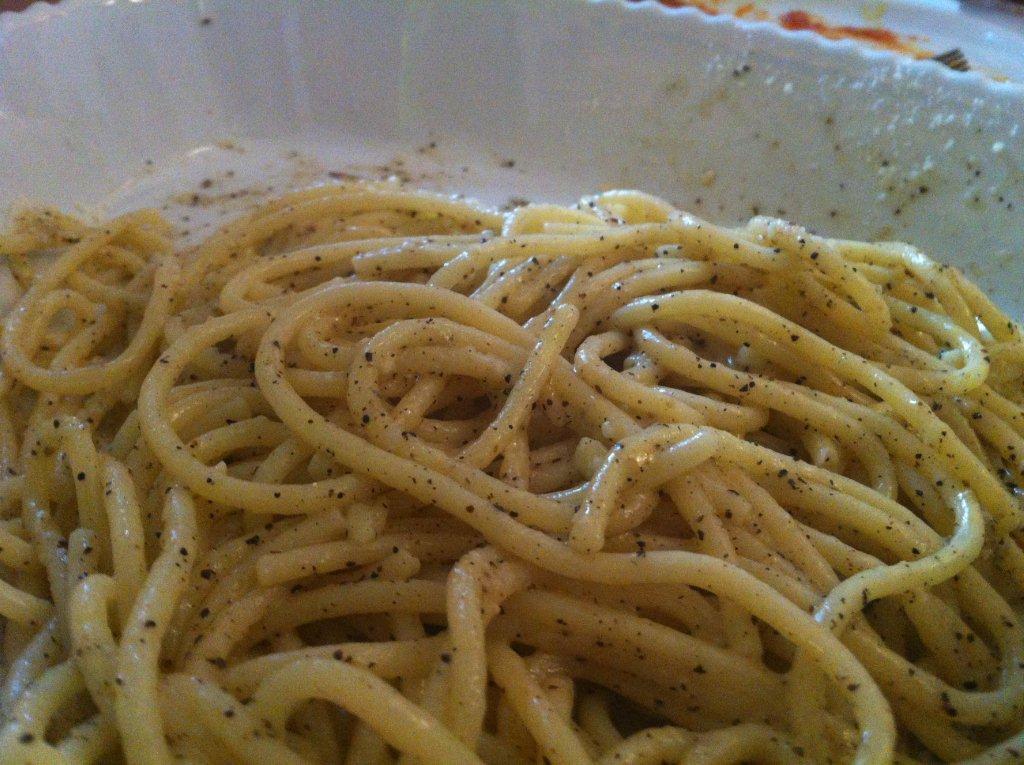
Contact us with Blog Enquiry in the subject title for any feedback or requests for a topic you want us to cover. Voted one of the best things to do in Rome, Eating Europe Food Tours offer a walking food tour through one of Rome’s oldest and most characteristic neighborhoods. Book a tour today!


